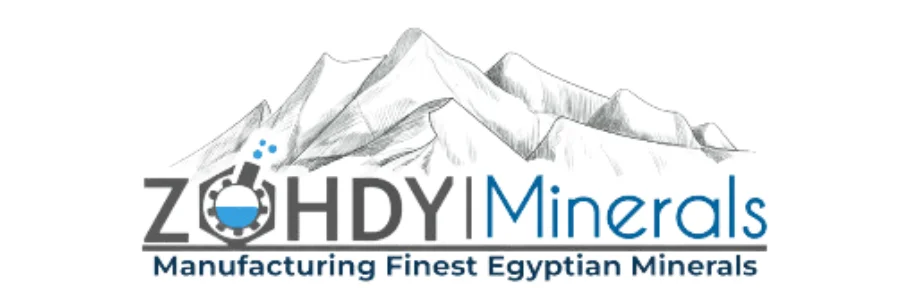Why is Calcium Carbonate Surface Coating Done in Saudi Arabia? Calcium carbonate is a natural inorganic compound and the primary component of limestone, marble, and similar minerals. When it comes to modifying calcium carbonate powder, many customers begin to wonder why production costs increase when surface treatment is applied, and whether this modification actually enhances the performance of final products.
Reasons for Surface Coating Calcium Carbonate
- Improved Dispersibility
Through surface modification, the modifier is selectively absorbed onto the calcium carbonate particles, making the surface acquire charge properties. Because like charges repel each other, agglomeration is reduced, resulting in excellent dispersion. - Better Compatibility with Other Materials
Surface coating increases the compatibility and bonding between calcium carbonate and organic materials. This significantly enhances the performance of composites such as rubber and plastics. - Reduced Oil Absorption Value
After surface treatment, particle agglomeration decreases and dispersion improves. Coating calcium carbonate with modifiers fills internal voids, reduces surface polarity, and lowers particle friction. This results in better flowability and packing, which ultimately reduces oil absorption values. - Expanding Advanced Applications
With surface coating, calcium carbonate can be used in high-value industries such as plastics, paints, rubber, paper, adhesives, and transparent films. This not only improves product quality but also reduces production costs. - Adding New Functional Properties
- Coating lightweight calcium carbonate with metals enhances certain properties in rubber products.
- Coating with titanium dioxide allows partial substitution of TiO₂, lowering costs without compromising performance.
If you need high-quality calcium carbonate in Saudi Arabia, Zohdy Minerals Egypt is your trusted partner.
Applications of Calcium Carbonate in Saudi Arabia – Zohdy Minerals Egypt
Calcium carbonate has countless applications across industries. Its most common uses are in paints, coatings, plastics, and paper.
The main reason for its widespread adoption is its ability to reduce production costs while enhancing the mechanical properties of final products. Thanks to its excellent light-scattering ability, it is also widely used in papermaking to produce opaque sheets. In paints, it serves as an extender to pigments like titanium dioxide, reducing gloss and improving opacity.
In the construction industry, it is indispensable – both as a direct building material and as a key component in cement manufacturing.
If you’re looking for premium-quality calcium carbonate in Saudi Arabia, contact Zohdy Minerals Egypt today.
Applications of Coated Calcium Carbonate
- Paints: Acts as a filler to improve durability, stain resistance, and coverage.
- Food Additives: Improves hardness, stability, sediment resistance, and adjusts acidity and taste.
- Rubber Fillers: Enhances hardness, abrasion resistance, and tensile strength.
- Plastics: Improves toughness, durability, heat resistance, and lowers cost.
- Cosmetics: Provides a smoother texture, easier application, and reduces greasiness.
- Pharmaceuticals: Improves stability, solubility, and is used in treating osteoporosis and acidity.
- Construction: Enhances strength, water resistance, and durability; also used in cement and coatings.
- Environmental Uses: Treats acidic soils and water by neutralizing acid rain and raising pH.
Common Materials Used for Surface Modification of Calcium Carbonate
- Surfactants: Stearic acid, phosphate esters, quaternary ammonium.
- Coupling Agents: Silane, titanate, and other composite agents for stronger bonding with polymers.
- Polymer Modifiers: Form polymer layers around calcium carbonate particles to prevent agglomeration and improve dispersion.
Machines for Calcium Carbonate Coating
- Vortex Mill: Uses high-speed rotors and airflow; achieves coating rates up to 99%.
- Three-Roll Coating Machine: Employs internal turbulence from three rollers; suitable for large-scale industrial production, with a 95% coating rate.
- High-Speed Mixer Coater: Compact vertical design, energy-efficient, utilizes centrifugal force for effective mixing of calcium carbonate with modifiers.
Coated vs. Uncoated Calcium Carbonate
In its natural state, calcium carbonate is hydrophilic (water-attracting), which can cause high friction in certain industries like plastics. By coating calcium carbonate, this property changes to hydrophobic (water-repelling), which reduces friction and enhances processability.
One common coating method is applying stearic acid, sprayed onto calcium carbonate particles.
Coated calcium carbonate is widely used in:
- Paints
- Paper fillers
- Ceramic applications
- Dietary supplements
Zohdy Minerals Egypt – Your Source for Premium Calcium Carbonate in Saudi Arabia
Whether you require coated or uncoated calcium carbonate, Zohdy Minerals Egypt delivers top-quality materials tailored to your industry needs, along with exceptional customer service.
For high-quality calcium carbonate in Saudi Arabia, contact Zohdy Minerals Egypt today.





